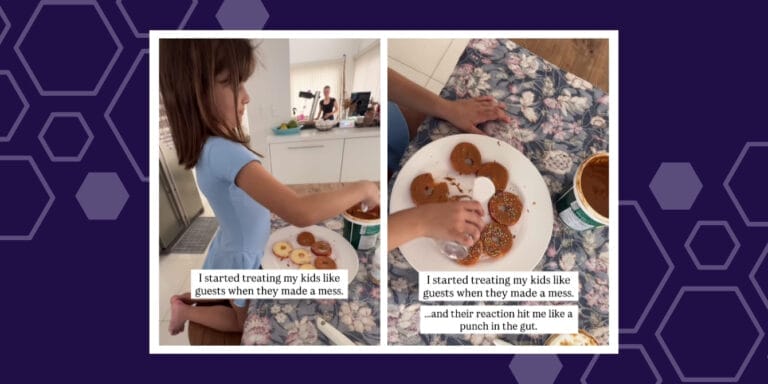Teething tips: How to cope when two-year molars come in

Offering child food—like fruits and vegetables—can bring instant relief.
Table of Contents
- Use teething rings or your sanitized fingers to rub your child's gums.
- Have your child bite or suck on chilled food, like fruits or vegetables.
- Over the counter medications like acetaminophen (Tylenol) or ibuprofen (Motrin) may help.
- Avoid using any topical anesthetic gel in your child's mouth.
- Finally, and most importantly, give your child attention.
Teething is fun for neither parent nor child. And just when you think it’s over, there’s still one more set of teeth to come in.
Called the “two-year molars,” the second primary molars usually make an appearance just after your child’s second birthday, signaling the start of the entire teething process all over again.
If your child is two and you haven’t seen these molars yet, don’t worry, they usually come in by 33 months.
Teething is not enjoyable for any child. The tooth has to break through the gums, which can result in tenderness and swelling of the area. This eruption takes anywhere from one to seven days per tooth to occur, which means this isn’t a “Give them children’s Tylenol once at bedtime and they’ll be all better” kind of problem. But the good news is that once the tooth is fully in the mouth, the associated pain goes away.
Knowing your child won’t be in pain in a week doesn’t change the fact that your child is uncomfortable right now.
I’ve seen many unhappy parents, unable to placate their babies, who seem to be in just as much pain as their teething children. Some of this stems from unfounded concerns that teething will bring a host of problems to their kids, like fevers, respiratory problems, or diarrhea.
These others “symptoms” are usually coincidental, as teething is a natural part of child development and results in localized signs and symptoms, not systemic ones (i.e. seen throughout the body). And, assuming a fever or some other symptom is related to teething may cause a parent to overlook what the real problem actually is.
Another reason many parents feel helpless during teething is that the only recourse infants have for expressing pain is crying.
Good news, then, for parents dealing with two-year molars—your children are older now, and they likely will be able to let you know a little more specifically what is going on, allowing you to better address their pain.
Once you know your child is having pain from teething, there are a few things you can do to help and support them:
Use teething rings or your sanitized fingers to rub your child’s gums.
The pressure from this action can help to soothe the area. If you’re using a teething ring, make sure it is not filled with a liquid. These kinds of teething rings can actually burst open, making possible accidental ingestion a problem.
Have your child bite or suck on chilled food, like fruits or vegetables.
The coldness will decrease inflammation in the area, and the pressure from chewing also might help. Make sure that the foods aren’t too cold, though. The Mayo Clinic warns that contact with frozen items in some cases actually can be harmful to the baby’s mouth.
Over the counter medications like acetaminophen (Tylenol) or ibuprofen (Motrin) may help.
Just make sure you administer the appropriate children’s dose. If you aren’t sure what that is, contact your pediatrician.
Avoid using any topical anesthetic gel in your child’s mouth.
The FDA warns that ingestion of these products can cause seizures, heart issues, and death in some cases. Additionally, amber teething necklaces or bracelets can pose both choking and strangulation risks, warns the American Academy of Pediatrics. The Academy also cites a lack of any science supporting their therapeutic benefits.
Finally, and most importantly, give your child attention.
Sometimes just distracting your child from the pain is a remedy in itself. In fact, one study showed that over 70 percent of mothers found this to be an effective remedy for teething.
To sum up: there will be tears, there will be pain, and you will at times feel helpless — but if you follow these simple steps, you can find relief for all involved.








































